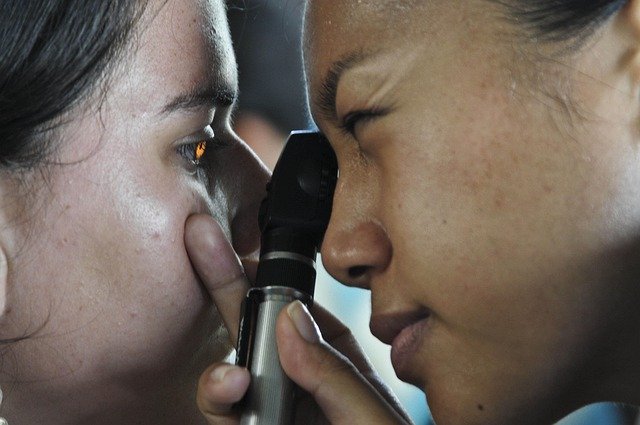Understanding Dry Eye Treatment Options and Causes
Dry eye syndrome affects millions of people worldwide, causing discomfort, vision problems, and reduced quality of life. This common condition occurs when tears cannot adequately lubricate the eyes, either due to insufficient tear production or poor tear quality. Understanding the various causes, from incomplete blinking patterns to underlying medical conditions, is essential for effective treatment. Early recognition and proper management can significantly improve symptoms and prevent long-term complications.

Dry eye syndrome represents one of the most prevalent eye conditions globally, affecting people of all ages but becoming increasingly common with advancing years. The condition manifests through various symptoms including burning sensations, grittiness, redness, and blurred vision that can significantly impact daily activities.
How Incomplete Blinking Contributes to Evaporative Dry Eye
Incomplete blinking plays a crucial role in developing evaporative dry eye, the most common form of this condition. During normal blinking, the eyelids spread a thin layer of tears across the eye surface, replenishing the tear film and removing debris. However, when blinking becomes incomplete or infrequent, this natural process becomes compromised.
Modern lifestyle factors contribute significantly to incomplete blinking patterns. Extended screen time, whether from computers, smartphones, or tablets, reduces blink rates by up to 60%. When focusing intently on digital devices, people tend to blink less frequently and less completely, preventing proper tear distribution. This leads to increased tear evaporation and subsequent dry eye symptoms.
Environmental factors such as air conditioning, heating systems, and windy conditions can exacerbate evaporative dry eye when combined with incomplete blinking. The meibomian glands, which produce the oily layer of tears, may also become blocked or dysfunctional, further contributing to rapid tear evaporation.
Importance of Early Diagnosis and Treatment of Dry Eye Causes
Early diagnosis and treatment of dry eye causes can prevent progression to more severe forms of the condition and avoid potential complications. Left untreated, chronic dry eye can lead to corneal damage, increased risk of eye infections, and permanent vision problems.
Comprehensive eye examinations can identify underlying causes before symptoms become severe. These evaluations typically include tear production tests, tear film stability assessments, and examination of the eyelids and tear glands. Advanced diagnostic tools such as meibography can visualize meibomian gland structure and function.
Prompt treatment intervention helps preserve the eye’s natural tear production mechanisms and prevents the development of inflammatory cycles that can worsen the condition. Early management strategies often focus on lifestyle modifications, environmental controls, and gentle treatments that support natural tear function.
Medications That Can Cause or Worsen Dry Eyes
Numerous medications can contribute to dry eye development or exacerbate existing symptoms. Antihistamines, commonly used for allergies, reduce tear production by blocking acetylcholine receptors involved in tear gland stimulation. Decongestants work similarly, decreasing both nasal and tear gland secretions.
Antidepressants, particularly tricyclic antidepressants and selective serotonin reuptake inhibitors, can significantly impact tear production. Blood pressure medications, including beta-blockers and diuretics, may also contribute to dry eye symptoms through various mechanisms affecting tear gland function.
Hormone replacement therapy and oral contraceptives can influence tear composition and production, particularly in postmenopausal women. Pain medications, sleep aids, and certain acne treatments may also contribute to dry eye symptoms. Patients should discuss these potential side effects with healthcare providers to explore alternative medications or additional dry eye treatments.
Common Medical Conditions Linked to Dry Eyes
Several systemic medical conditions are strongly associated with dry eye development. Autoimmune disorders such as Sjögren’s syndrome, rheumatoid arthritis, and lupus can attack the tear and salivary glands, leading to severe dry eye symptoms. These conditions often require specialized treatment approaches addressing both the underlying disease and dry eye symptoms.
Diabetes affects tear film stability and corneal sensitivity, making individuals more susceptible to dry eye complications. Thyroid disorders, both hyperthyroidism and hypothyroidism, can influence eyelid position and blink patterns, contributing to tear film instability.
Rosacea, a common skin condition affecting the face, frequently involves the eyelids and meibomian glands, leading to evaporative dry eye. Allergic conditions can create chronic inflammation that disrupts normal tear production and quality.
Age-related hormonal changes, particularly in postmenopausal women, significantly impact tear production and composition. Understanding these connections helps healthcare providers develop comprehensive treatment strategies addressing both underlying conditions and dry eye symptoms.
| Treatment Type | Provider/Method | Cost Estimation |
|---|---|---|
| Artificial Tears | Over-the-counter drops | $5-25 per bottle |
| Prescription Drops | Ophthalmologist/Optometrist | $200-400 per month |
| Punctal Plugs | Eye specialist | $300-800 per procedure |
| IPL Therapy | Specialized clinics | $200-500 per session |
| Comprehensive Evaluation | Eye care professional | $150-400 per visit |
Prices, rates, or cost estimates mentioned in this article are based on the latest available information but may change over time. Independent research is advised before making financial decisions.
Effective dry eye management requires a comprehensive approach that addresses underlying causes while providing symptomatic relief. Treatment options range from simple artificial tears and lifestyle modifications to advanced therapies such as prescription medications, punctal plugs, and specialized procedures. The key to successful treatment lies in accurate diagnosis of the specific type and underlying causes of dry eye, allowing for targeted therapeutic interventions that can significantly improve patient comfort and visual function.
This article is for informational purposes only and should not be considered medical advice. Please consult a qualified healthcare professional for personalized guidance and treatment.




